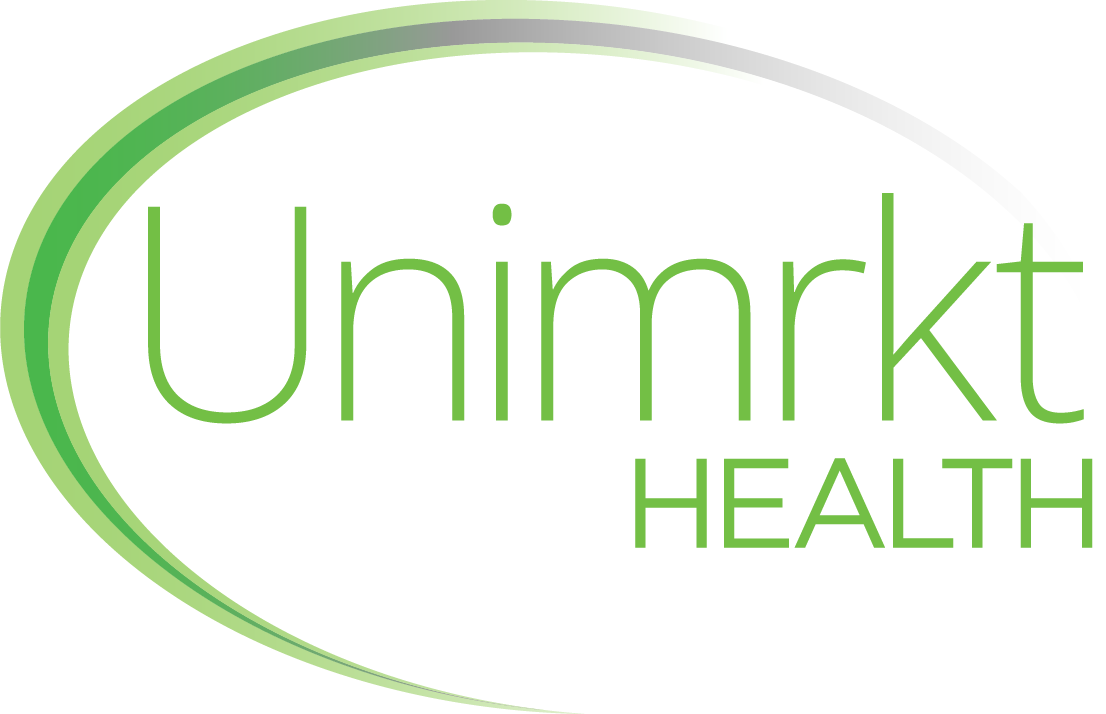Prioritising the Customer Voice in UX-Focussed Healthcare Market Research
- Unimrkt Healthcare » Blog » Prioritising the Customer Voice in UX-Focussed Healthcare Market Research
Understanding and prioritizing the customer voice has become indispensable in healthcare for fostering innovation and improving patient outcomes. As healthcare systems and products become more user-centric, UX-focused healthcare market research will continue playing a pivotal role in aligning solutions with real patient needs. In today’s blog, we will explore why the customer voice is vital, the challenges organizations face, and actionable strategies that companies can implement to achieve success. With the expertise of a health market research company at their disposal, organizations can seamlessly bridge the gap between expectations and experiences, ensuring that healthcare products and services meet the highest standards of usability and efficacy. Let’s find out how.
The Significance of the Customer Voice in Healthcare UX
Prioritizing the customer voice is central to the delivery of high-quality healthcare experiences. In a field where patient trust, safety, and satisfaction are critical, incorporating user feedback drives meaningful improvements in the following aspects:
- Health Outcomes: Tailoring services to patient preferences enhances engagement and adherence, leading to better results.
- Brand Loyalty: Listening to and acting on feedback builds trust and strengthens relationships with patients.
- Competitive Edge: Companies that embrace user-centricity outperform competitors by consistently delivering superior solutions.
The role of a health market research agency is indispensable, as they bring structured methodologies to capture and analyze patient feedback. Leading pharma market research companies have shown how data-driven insights can transform healthcare delivery systems, setting benchmarks for user satisfaction.
UX-Focused Healthcare Market Research: What It Entails
UX-focused healthcare market research involves systematic efforts to understand, measure, and improve user interactions with healthcare products and services. Its core elements include:
- Capturing Authentic Feedback: Gathering insights through qualitative and quantitative methods such as interviews, focus groups, and surveys.
- Patient Journey Mapping: Documenting interactions across the continuum of care to pinpoint pain points and opportunities.
- Iterative Design Testing: Continuously refining products or services based on user testing and feedback.
Collaboration with a specialized health market research company ensures that this process is both robust and tailored to the unique demands of the healthcare sector. For example, one of the top pharma market research companies successfully redesigned an oncology patient portal after identifying challenges with navigation and accessibility, resulting in a 35% increase in patient engagement.
Key Challenges Companies Face When Incorporating the Customer Voice
Despite its importance, integrating the customer voice into UX design comes with a fair share of challenges. Here are the challenges that organizations are likely to face:
- Data Sensitivity and Privacy: Regulations like GDPR and HIPAA create barriers to collecting and analyzing user data.
- Diverse Patient Demographics: Addressing the needs of varied user groups, from tech-savvy millennials to elderly patients with limited digital literacy.
- Limited Access to Feedback: Many patients feel their input won’t lead to meaningful change, reducing their willingness to participate.
- Cost and Resource Constraints: Smaller organizations often struggle to allocate sufficient resources to conduct comprehensive health market research studies.
While these challenges exist, that doesn’t mean you cannot overcome them. Partnering with an experienced health market research agency can help you overcome these barriers, ensuring highly effective research.
5 Key Strategies to Prioritize the Customer Voice in Healthcare UX Research
Ensuring that the customer’s voice is prioritized in healthcare UX research is essential for designing products and services that genuinely meet their needs. Healthcare providers can create more accessible, effective, and user-friendly experiences simply by incorporating insights from patients and caregivers. Below are five critical strategies that can be employed to put the customer voice at the heart of healthcare UX research.
Focus On Inclusive Research Practices
To create meaningful and accessible healthcare experiences, it’s vital to ensure that research practices are inclusive. This means actively seeking feedback from patients across diverse demographics, including various ages, genders, medical conditions, socio-economic statuses, and geographies. Encompassing a broad range of perspectives will allow healthcare providers to design solutions that are relevant and effective for a wider patient base. This level of inclusivity will not only improve the product but also build trust among users. For instance, a healthcare organization may aim to design a telemedicine platform that is accessible to patients with different levels of digital literacy. By incorporating feedback from patients who are less tech-savvy and those with varying health conditions, the platform can be designed with features like easy navigation, larger fonts, and voice guidance, which enhance usability for a wider group of patients. This leads to a more inclusive and effective healthcare tool that drives greater adoption and patient satisfaction.
Multi-Channel Data Collection Is A Must
A single research method is rarely sufficient to capture the full spectrum of patient needs and experiences. Combining traditional research methods like interviews, surveys, and focus groups with digital tools such as sentiment analysis, social media listening, and real-time feedback from wearable devices, can enable healthcare organizations to gain a more comprehensive understanding of patient experiences. For example, using wearables to track patient vitals and behaviors during recovery provides invaluable real-time insights. These data points can be analyzed alongside patient surveys and interviews to identify trends, uncover pain points, and refine the patient experience. By gathering data from multiple sources, healthcare providers are better equipped to address patient needs at every touchpoint, leading to improved treatment outcomes and patient satisfaction.
Keep Creating and Refining Patient Personas
A patient persona is a detailed representation of a segment of patients based on real-world research data. These personas help healthcare designers and developers better understand the needs, behaviors, and challenges of their target patient groups. Building accurate, research-driven personas enables healthcare teams to design products, services, and interfaces that resonate with the specific needs of various patient segments. If a healthcare company is designing a new medication management system for elderly patients, they might create personas reflecting the cognitive and physical challenges these patients face, such as memory loss or arthritis. By understanding these pain points, the design can prioritize larger buttons, simplified instructions, and reminders that cater to the unique needs of older patients. Such a targeted approach not only improves usability but also reduces the likelihood of medication errors, ultimately improving patient safety and adherence.
Map and Optimize the Patient Journey
Patient journey mapping involves understanding the full scope of the healthcare experience, from initial contact with the healthcare provider to post-treatment care. Healthcare organizations can identify gaps, inefficiencies, or pain points in the patient experience by analyzing every touchpoint along this journey. This approach allows for targeted improvements that directly enhance patient satisfaction and outcomes. To help simplify the theory, let’s consider the patient journey for prenatal care. Mapping the experience from the first prenatal visit through to post-delivery follow-ups can allow healthcare providers to identify areas where patients feel unsupported or confused, such as unclear instructions on what to expect during labor or long waiting times for appointments. Optimizing the journey by streamlining communication, offering digital resources, or improving appointment scheduling systems can help reduce anxiety and improve overall patient satisfaction. When these improvements are made, healthcare providers can see a significant increase in patient engagement and loyalty.
Collaborative Design and Prototyping
Collaborative design is an approach where patients are actively involved in the design and testing phases of product development. This participatory approach ensures that healthcare solutions are not only functional but also truly meet the needs of patients. Engaging patients directly in prototyping and user testing helps identify usability issues early, ensuring that the final product is intuitive, effective, and user-friendly. A real-life example of this can be seen in the development of medical devices. A medical device company might invite patients with chronic conditions to provide feedback on early prototypes of a new device designed for home use. Through user testing, the company might learn that patients have difficulty using a particular feature or that certain design elements need to be simplified. Incorporating this patient feedback into the final product results in a better user experience, fewer delays in product development, and a more successful launch.
How Technology Can Help Amplify the Customer Voice
Technological advancements are playing an increasingly significant role in capturing and amplifying the customer voice, especially in healthcare UX research. With the evolution of digital tools and platforms, the ability to collect, analyze, and act on patient feedback has been greatly enhanced. These technological innovations are not just improving the way feedback is gathered but are also enabling healthcare providers and companies to create solutions that are more closely aligned with patient needs. Below, we explore how cutting-edge technologies are amplifying the customer voice in healthcare.
AI-Driven Insights: Predictive Analytics Identifying Emerging Patient Needs
AI algorithms can analyze patterns in patient feedback from various sources, such as surveys, online forums, or social media, to detect sentiment and emerging concerns. This type of data analysis can be particularly valuable in identifying common pain points or unmet needs, allowing healthcare organizations to design solutions proactively. For instance, a pharmaceutical company might use AI to analyze online patient discussions about a specific drug, uncovering a pattern of patients expressing difficulty in administering the medication. Based on these insights, the company can redesign the drug’s administration process, improving usability and ultimately leading to better patient adherence and outcomes.
Remote Monitoring: Wearables and IoT Devices Providing Real-Time Feedback
The rise of wearable technology and Internet of Things (IoT) devices has revolutionized patient monitoring and feedback collection. Wearables such as fitness trackers, heart rate monitors, and glucose meters provide continuous, real-time data about a patient’s health, allowing healthcare providers to monitor progress, detect potential issues, and personalize treatment plans. This constant stream of data offers insights into patient behaviors, preferences, and real-time health status, amplifying the customer voice beyond traditional surveys or focus groups. By utilizing these technologies, healthcare organizations can gather valuable feedback from patients without the need for direct interaction. For example, smartwatches and health trackers can collect data on how well patients are following prescribed exercise regimens or medication schedules. If patients are not adhering to their prescribed routines, healthcare providers can intervene and offer personalized support, making it easier for patients to stay on track.
Virtual Testing Platforms: Enabling Usability Testing Without Geographic Barriers
In the past, conducting usability testing for healthcare products often required in-person interactions, which posed logistical challenges, especially in reaching a diverse patient population. Virtual testing platforms have now eliminated these barriers, enabling healthcare organizations to conduct usability tests remotely. Through online surveys, video calls, and digital prototypes, companies can gather feedback from patients regardless of location, significantly expanding the reach of customer research. For example, a healthcare company could use virtual testing platforms to conduct usability studies on a new telemedicine app. Patients from different regions, backgrounds, and health conditions can participate in the testing process, offering feedback on the app’s user interface, accessibility, and features. With this broad geographic reach, healthcare providers can ensure that their product is user-friendly for a diverse range of patients and make adjustments before the app’s official launch.
Consult Today
Prioritizing the customer voice in UX-focused healthcare market research is a vital step toward delivering patient-centered solutions that truly make a difference. In this regard, leveraging the expertise of health market research agencies or pharma market research companies, can help healthcare organizations ensure that every patient interaction is intuitive, efficient, and impactful. Are you ready to embrace the customer voice today to lead the future of healthcare innovation? In that case, collaborating with a leading health market research company can help you achieve what you have been looking for. Unimrkt Healthcare is one of the top pharma market research companies in India. Throughout the years, we have consistently applied scientifically validated market research methodologies in the health industry, ensuring the delivery of actionable data through meticulous targeting of respondents. To learn more about how we can help you with your online bulletin board market research endeavor, call +91-124-424-5210, +91-9870-377-557, or sales@unimrkthealth.com. You may also fill out our contact form, and our team of experts will assist you as soon as possible.
Recent Posts
- From Concept to Market: Using Research to Ensure Animal Health Product Acceptance
- Leveraging Primary Market Research to Drive Pharma Brand Repositioning
- Precision Insights for Precision Medicine: Market Research to Drive Personalized Healthcare
- The Sales Head: Conducting Research with Star KOLs in the Pharmaceutical Industry
- Business Research Methodologies in Healthcare: 7 Desk-Based Approaches That Work
Archives
- November 2025
- October 2025
- September 2025
- August 2025
- July 2025
- June 2025
- May 2025
- April 2025
- March 2025
- February 2025
- January 2025
- December 2024
- November 2024
- October 2024
- September 2024
- August 2024
- July 2024
- June 2024
- May 2024
- April 2024
- March 2024
- February 2024
- January 2024
- December 2023
- November 2023
- October 2023
- September 2023
- August 2023
- July 2023
- June 2023
- May 2023
- April 2023
- March 2023
- February 2023
- January 2023
- December 2022
- November 2022
- October 2022
- September 2022
- August 2022
- July 2022
- June 2022
- May 2022
Quick Enquiry
Customer Service, We Make it Better
Related Posts:
Let's Connect
Please, fill in the form to get in touch!



